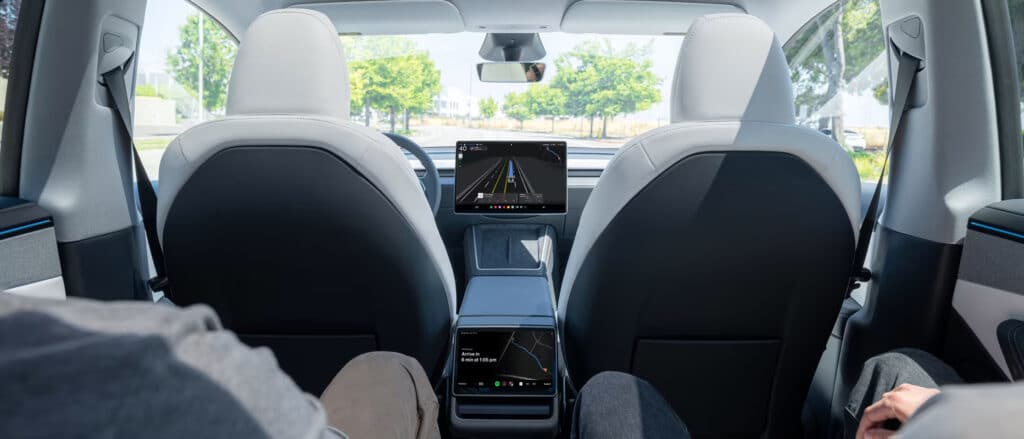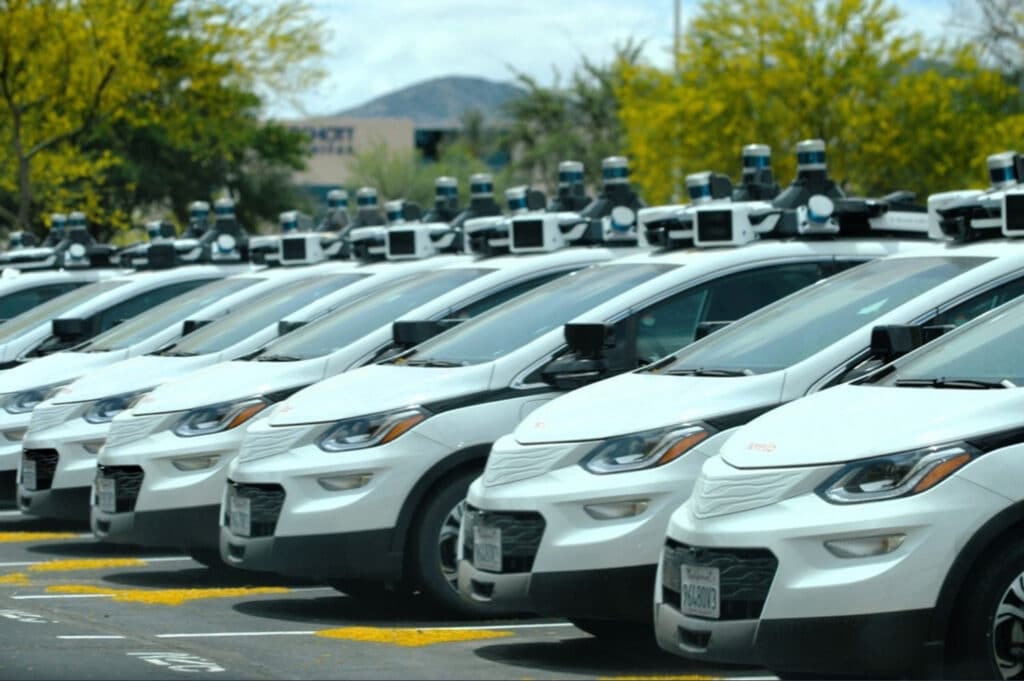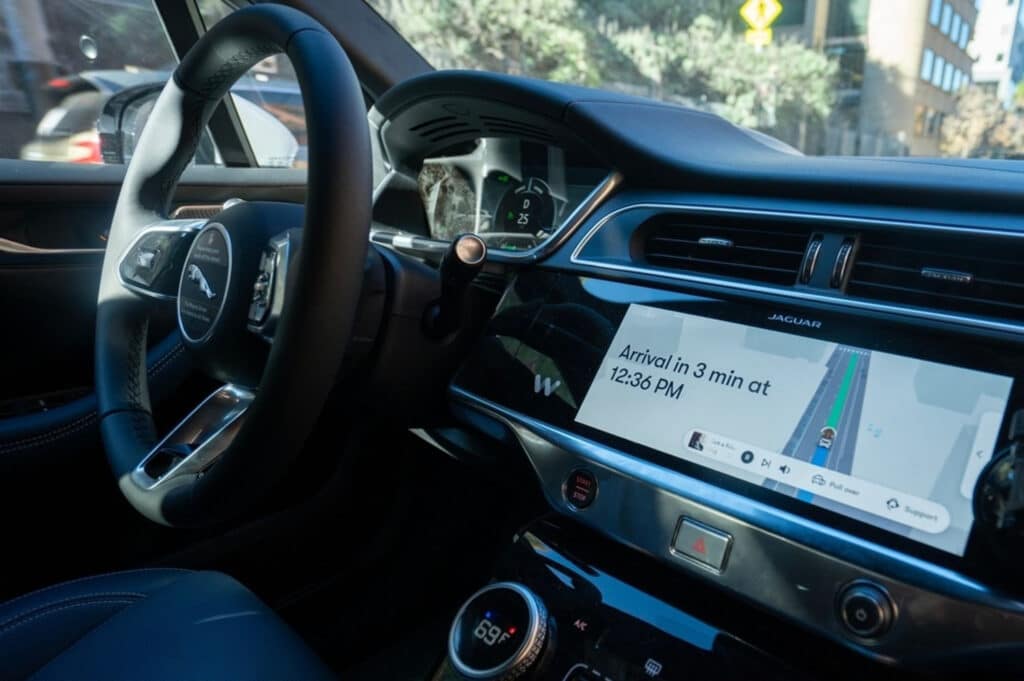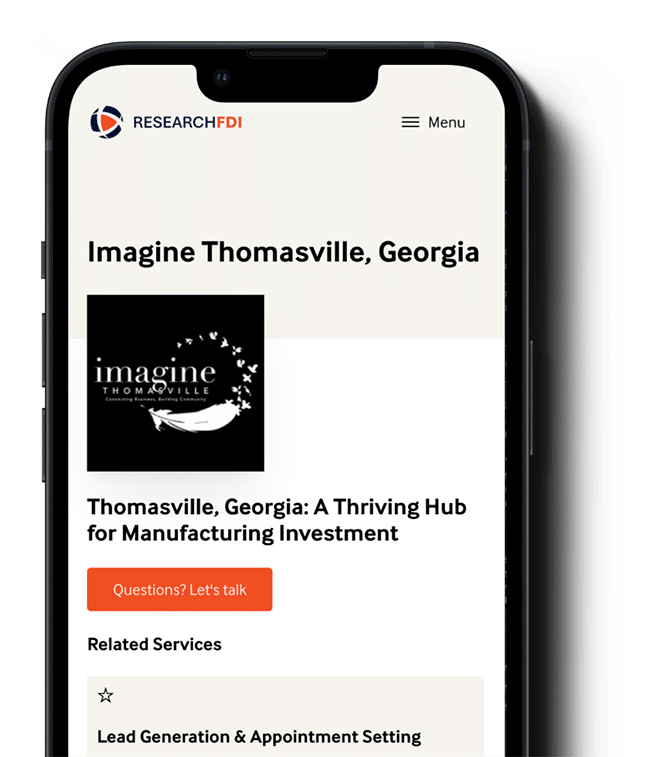It’s a busy evening in San Francisco and you’re heading out to meet friends. A white taxi glides to the curb. The door unlocks. You climb in. It’s almost like every other taxi experience you’ve ever had….
Except: No driver turns around to ask where you’re going.
The scene isn’t speculative. Driverless Waymo taxis are currently operating across San Francisco 24/7.
Waymo’s driverless service has carved out a notable slice of local ride-hailing, with some analyses estimating it handles more than a fifth of ride-share trips in San Francisco neighborhoods where it operates. Tesla, meanwhile, is testing supervised rides and building toward its own robotaxi concept, keeping regulators, competitors, and riders watching closely.
But this isn’t just a San Francisco story. The U.S. network is widening: Phoenix already allows airport robotaxis, and San José has approved Waymo service at Mineta International Airport, with staged rollout under way. Europe is moving too. Waymo has announced plans to launch driverless taxis in London starting in 2026, while Uber and UK startup Wayve are preparing a safety-driver-free trial targeted for the same window, early indicators that European capitals are readying for autonomous ride-hail.
So what should economic development organizations (EDOs) read into all this? Robotaxis aren’t only a transportation upgrade; they’re a signal of where jobs, suppliers, depots, charging infrastructure, and data capabilities will concentrate next.
For regions in the U.S. and Europe, the question isn’t “Will they come here?”—it’s “Are we ready to win when they do?” Today’s article will break down what robotaxis are (and aren’t), where the market is headed, and how to prepare, across sites and power, policy and safety, workforce and suppliers, and partnerships with platforms and OEMs. Along the way, we’ll keep an eye on practical signals (from airport approvals to city pilots) and show how to turn readiness into an investment narrative.
What Is a Robotaxi?
At its simplest, a robotaxi is a self-driving taxi you can hail on demand: no human driver up front. Think of the ride-hailing experience you already know, only the vehicle handles the driving itself.
How it Works
- Autonomous driving system: The car uses sensors (cameras, radar, sometimes lidar) plus onboard AI to perceive the road, make decisions, and navigate safely.
- Geofenced operating areas: Early deployments run inside defined zones (specific neighborhoods, airport corridors, or city districts) where mapping, rules, and conditions are well understood.
- Remote support when needed: If a situation gets tricky, trained staff can provide remote assistance. In newer programs, there may be no steering wheel at all; in others, a safety supervisor remains in the driver’s seat while the software does the work.
- Hailing is familiar: You request a ride through an app, watch the car approach on a map, and unlock the doors when it arrives (very similar to today’s ride-hailing experience).
Who’s Building Robotaxis
Several players are shaping the landscape:
- Waymo with fully driverless services in select U.S. cities.
- Tesla, developing a dedicated tesla robotaxi concept (often nicknamed Cybercab) while testing supervised autonomy today.
- Zoox (Amazon), Cruise (retooling after setbacks), and a wave of Chinese operators scaling quickly across major metro areas.
- Platform partnerships matter, too; think Uber robotaxi integrations that plug autonomous fleets into big, existing customer bases.
Where They Operate Today
- U.S. pilots have clustered in places like San Francisco and Phoenix, with airport connectors emerging and additional corridors being mapped in other cities.
- Europe is preparing limited driverless pilots in major capitals, with safety frameworks, insurance models, and municipal playbooks being built out.
- Expect the next phase to look less like a single “on” switch and more like a patchwork of expanding urban service zones.
What a Robotaxi Ride Feels Like
- Quieter, more predictable: The vehicle follows the rules strictly, no sudden lane dives or rolling through stop signs.
- Clear instructions: You’ll get guidance in-app (where to wait, how to unlock, when to buckle up), and interior screens often display the car’s intentions.
- Sometimes slower: Because the system obeys the law to the letter and yields conservatively, trips can take a bit longer during heavy traffic or complex merges.
The Near-Term Economics (What Riders Notice)
- Pricing: In many U.S. deployments, rides can be 20–40% more expensive than comparable human-driven trips today. In some Chinese pilots, fares have undercut conventional taxis as operators chase scale. Local conditions (power costs, depot rent, insurance, and utilization) heavily influence price.
- Availability: Service windows and coverage areas can be limited at first, expanding as operators gain confidence and regulatory approvals.
Why This Matters for EDOs
Robotaxis don’t just change rides, they change where mobility jobs, suppliers, and investment land. Depot sites need power and zoning. Training programs must seed new roles (EV/AV technicians, fleet ops, tele-assist staff). City teams need curb management and safety protocols. The regions that prepare early can pitch a credible, investor-ready story to the companies building the future of urban mobility.
From Pilots to Expansion — The Global Robotaxi Network

What started as a handful of pilot programs is quickly becoming a global race.
In just a few years, robotaxis have shifted from controlled trials to commercial rollout, with more than two dozen cities worldwide now hosting operational or near-operational services.
Robotaxis in the U.S.
San Francisco remains the testing ground for the industry in the US. Waymo’s fleet now completes tens of thousands of fully autonomous rides each week, while Tesla gears up for its Robotaxi Network launch. Other U.S. cities like Phoenix, Austin, and Miami are also granting driverless permits as infrastructure and regulation catch up.
Robotaxis in China
China is scaling faster than anyone. Operators like Baidu’s Apollo Go and WeRide already serve major metro areas including Beijing, Wuhan, and Shenzhen — some with 24/7, fully autonomous service. By 2035, analysts project the country’s fleet could exceed half a million self-driving taxis, underpinned by supportive policies and lower hardware costs.
Robotaxis in Europe and the Middle East
The European and Middle Eastern robotaxi rollout is more measured but gaining pace. London, Munich, and Paris are in active testing phases, while Dubai has announced plans to introduce Tesla robotaxis and other autonomous fleets within the decade. These early steps are as much about regulatory learning as they are about public readiness.
What Expansion Looks Like
Early robotaxi zones tend to cluster around airports, dense business districts, and innovation corridors, and other areas that combine clear mapping data with reliable demand. Over time, those “geofenced” zones expand outward, creating connected corridors that link city centers, suburbs, and industrial parks.
The takeaway? The robotaxi economy is forming, piece by piece. As these companies grow, their expansion decisions will be driven by factors that municipal governments can control. Cities that align their zoning, power capacity, and policy frameworks now will be first in line when operators go looking for new expansion markets.
The Economics Behind Robotaxis: Jobs, Cost, and Market Potential
Robotaxis aren’t just a technological leap, they’re a new layer of economic infrastructure. The shift from human-driven fleets to autonomous networks will reshape local job markets, industrial supply chains, and investment priorities in every city they touch.
Job Creation and Transformation
The first misconception is that automation eliminates jobs. In practice, it shifts them.
Robotaxi ecosystems create demand for new roles in fleet operations, remote monitoring, software maintenance, and EV infrastructure management. Mechanics become technicians. Dispatchers become data analysts. Cities with strong workforce development programs and local training partnerships will attract more of these next-generation mobility jobs.
Cost and Accessibility
Today, robotaxis remain more expensive than traditional ride-hailing services (typically 20–40% higher in U.S. cities) but the economics are changing fast. Without driver salaries or traditional shift limits, per-mile costs will continue to fall. In markets like China, autonomous rides are already undercutting conventional taxi fares by up to 30%, signaling where this is headed once fleets scale.
Market Potential
Analysts forecast the global robotaxi economy to exceed $100 billion by 2035, with major growth hubs in the U.S., China, and Europe. That growth isn’t limited to transport; it extends to software firms, mapping providers, charging infrastructure, AI data centers, and advanced manufacturing.As these supply chains mature, expect new clusters of investment activity around logistics corridors, innovation zones, and airport hubs, all of which depend on local readiness.
The EDO Opportunity
For economic developers, this moment is similar to the early EV boom or the onset of smart manufacturing. The goal isn’t to chase a single project but to prepare your ecosystem: workforce pipelines, real estate, and regulatory predictability. The cities that do will be first to attract suppliers, R&D teams, and pilot programs.
That’s where ResearchFDI comes in.
Our team helps economic developers translate fast-moving global trends (like autonomous mobility and the rise of the robotaxi economy) into actionable strategies that drive real investment. We combine data-driven market intelligence with decades of on-the-ground experience in site selection, lead generation, and investment attraction.
Whether you’re planning for autonomous fleets, electrification corridors, or supplier readiness, we can help you identify which opportunities fit your region, and how to position your community as an investment destination of choice.
Ready to future-proof your region for the next wave of innovation?
| Browse our services to start planning a stronger investment strategy, today. |
|---|
Infrastructure Readiness: Power, Policy, and Place

Every emerging industry needs groundwork, and for the robotaxi economy, that groundwork is literal. The transition from pilot projects to city-wide adoption hinges on three fundamentals: power capacity, public policy, and place-based planning.
Power and Charging Readiness
Electric fleets demand dependable, scalable energy. A single autonomous-vehicle hub can require megawatts of load for charging, data centers, and fleet maintenance. Cities that have already invested in EV-ready grids and renewable-energy corridors hold a clear advantage. EDOs should identify high-capacity industrial zones and transit hubs where charging infrastructure can expand without disrupting local supply.
Policy and Regulation
Robotaxis don’t just plug into charging ports; they plug into policy, too. Permitting, data-sharing frameworks, and safety oversight all determine whether a market moves or stalls. Regions that develop transparent approval processes and pilot-friendly regulations are the ones attracting early investment. That means aligning municipal transportation plans, zoning rules, and public-private partnerships to balance innovation with accountability.
Place and Planning
Autonomous fleets need more than charging points; they need strategically located staging areas, maintenance depots, and AI mapping centers. These clusters often emerge near airports, industrial parks, and university innovation districts. Identifying such “mobility-ready” real estate, where logistics, data, and talent intersect —can turn an underused parcel into an economic anchor.
Partnerships & Ecosystem Development
Robotaxi networks can’t scale in isolation. They depend on an ecosystem of partners, from AI firms and utilities to real estate developers, transit authorities, and telecom providers. Economic developers who understand this web of relationships can help their regions become indispensable to the mobility supply chain.
Building the Right Partnerships

Success starts with collaboration.
Public agencies must work alongside technology operators, fleet service firms, and universities to create testing zones and real-world learning environments. The goal isn’t just to attract a pilot but to embed research, workforce training, and supplier development in the same region.
Creating an Innovation Cluster
Mobility ecosystems grow where data, infrastructure, and talent intersect. Establishing partnerships between robotics startups, OEMs, and EV infrastructure firms can help regions build credibility as innovation hubs. The best EDOs act as connectors — bringing the private sector, academia, and government to the same table to align incentives and accelerate implementation.
Positioning for FDI
Robotaxi operators and their suppliers are expanding globally, often looking for partners to establish assembly sites, mapping centers, or AI R&D offices. By showcasing a region’s workforce readiness, energy reliability, and zoning clarity, EDOs can attract these long-term investments before competitors do.
What EDOs Can Do to Prepare

You don’t have to be first to win, but you do have to be ready.
- Assess Infrastructure Gaps
Identify where your grid, zoning, and broadband capacity fall short of supporting autonomous fleets. These audits are often the foundation for early-stage investment discussions. - Engage the Right Stakeholders Early
Bring utilities, transit planners, universities, and local employers into the same conversation. The earlier you align around shared goals, the faster you can act when opportunities appear. - Leverage Pilot Projects
Even small test corridors or charging depots can put your region on the map. They create visibility and demonstrate regulatory openness, key signals to global investors. - Market Readiness with Data
Create a public-facing “mobility readiness” portfolio: maps, incentive outlines, and workforce stats that make your story tangible to foreign investors. - Plan for Inclusivity
Position autonomous mobility as a tool for better access, not just for early adopters. Partner with local organizations to ensure deployment supports underserved communities and equitable outcomes.
The Newly Paved Road of Robotaxis
The rise of robotaxis isn’t just changing how people move; it’s reshaping how cities grow. The regions that treat autonomous mobility as an economic strategy, not a novelty, will be the ones to capture the new jobs, suppliers, and innovation clusters that follow.
For economic developers, the mission is clear: anticipate the shift, align the infrastructure, and build partnerships that turn technology into local advantage. Because readiness (not luck) will determine who benefits most when fleets go mainstream.
How ResearchFDI Supports Infrastructure Readiness
At ResearchFDI, we help communities move from interest to implementation.
Our team works with EDOs and municipal leaders to assess infrastructure readiness, evaluate FDI potential, and connect regions with global mobility investors and suppliers. From feasibility studies to target-sector lead generation, we translate emerging trends like robotaxis into clear site-selection advantages.
| Contact our team today to start positioning your region for the next wave of smart investment. |
|---|



